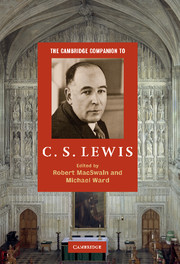10 - On discernment
from Part II - Thinker
Published online by Cambridge University Press: 28 November 2010
Summary
The Screwtape Letters, published in 1942, is a satire written from the perspective of a highly experienced devil, Screwtape, instructing his younger nephew, Wormwood, in the art of temptation, as Wormwood tries to turn a young human 'patient' away from the Enemy (God) towards the dark side. The letters are concerned with those temptations most typical of recent converts (indeed, the 'patient' turns to Christianity after the first letter) and blend ironic humour with indirect wisdom, the latter evidently stemming from Lewis's own hard-won self-knowledge and from his familiarity with the tradition of spiritual writing in the West (for example, though different in style, similar concerns can be found in such spiritual classics as St John of the Cross's The Dark Night of the Soul). Not surprisingly, the inexperienced Wormwood is himself tempted to try to turn his patient via blatant and obvious temptations while the wiser Screwtape everywhere extols the 'virtue' of deceit and confusion. It is in the exposure of such guile that the book excels, for the basically good 'patient' (he is never named) can best be undermined by his own spiritual vanity, as moral self-blinding becomes ever more subtle and complex even if transparently (from our point of view) self-defeating.
- Type
- Chapter
- Information
- The Cambridge Companion to C. S. Lewis , pp. 132 - 145Publisher: Cambridge University PressPrint publication year: 2010
- 1
- Cited by



